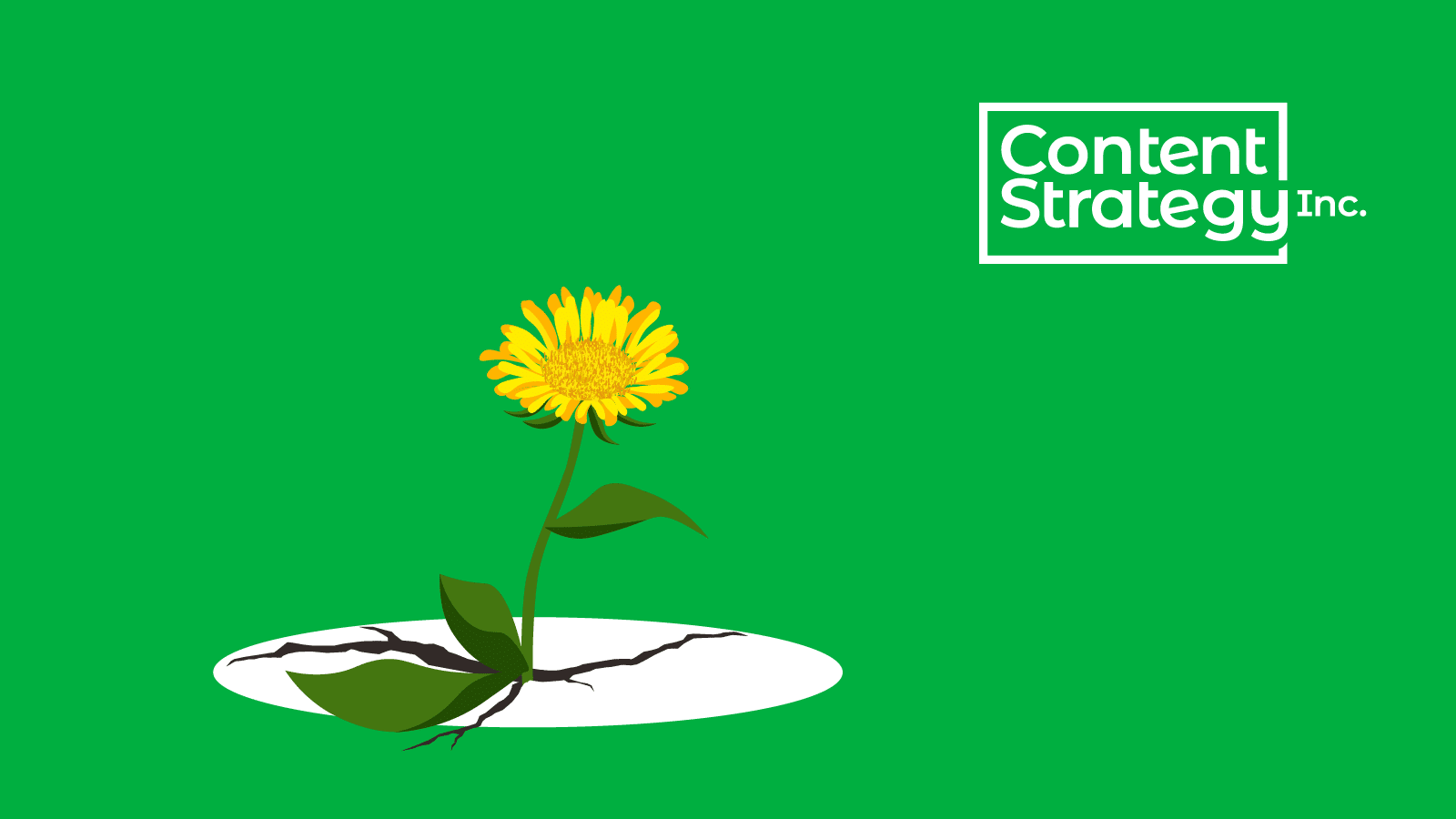Fostering resilience in the workplace, and in yourself
Content burnout is real. I’ve seen employees so discouraged by their inability to create impactful content in their organization that they simply give up.
I know one digital manager who quit his job when he realized that he made no substantial impact after six years of dedicated hard work. I know a content coordinator who was so disillusioned by the state of content in her organization that she became a major roadblock to new opportunities; all she could see was why things would never work. I know a content manager who took a stress leave to reevaluate her career because she didn’t feel her skills were valued where she was. These are just three examples, but there’s nothing especially unique about their situations, perceptions, or actions.
These people did not lack resilience. They were all dedicated, highly-skilled people, passionate about content. They’d accepted positions thinking that they could make a difference, big or small, to the business and its customers, and persevered for years. So, what happened?
Resilience is the ability to stay positive and motivated, even when change is painfully slow and people don’t easily recognize the value you bring. But personal resilience only goes so far when you’re working within an environment that does not reward, or strengthen, your resilience.
Driving good people away does not build strong content teams. Fostering a culture of resilience does.
I recently spoke to half a dozen people in various content roles within large organizations to find out what they felt fostered, or impeded, resilience in the workplace. Some very strong patterns emerged that also aligned with my experiences. Here’s what I found out.
How to build resilience on your content teams
Collaborate and work in cross-functional teams
Working together was a strong theme among the people I talked with who had experienced a culture of resilience. This includes both working more collaboratively with other content people in different roles, and also cross-functionally with people in different departments such as product, design, or marketing.
One content strategist from a global technology company told me about how her teams recently moved to a more collaborative working model. “We used to focus on our own area,” she said. “There was a web person, an email person, an SEO person, etc. Lately we’ve been working together and aligning our work to a joint vision. It’s easier for all of us to stay positive when we fight together for content improvements, rather than fighting against each other.”
Shopify’s Alaine MacKenzie recognizes that collaboration isn’t always easy when a content person or team is starting out and other teams don’t understand the value they can add. She remembers the early days at Shopify when the content strategists would “crash the design workshops. And then we really had to bring value,” she recalled.
Another way to work together is to develop a partnership with other content teams, and make sure you support each other. Susan Westwater, a senior content strategist at a global enterprise corporation, explained that her team has “a pact that we don’t talk badly about each other’s work to others when the content and creative teams are not in alignment.”
Provide (or find) supportive leadership
Everybody I spoke with felt that leaders who support, listen, and clearly communicate rationale for their decisions are critical in building a culture of resilience.
Interestingly, senior leaders who provide this support do not need to be direct managers. One content strategist who works for a large software-as-a-service (SaaS) technology company (and prefers to remain anonymous), says that even though she works in the Marketing department, it was the head of the Design department who really listened to her, understood the value of content, and championed it at the executive leadership level.
Acknowledge successes
It’s important to somehow recognize and acknowledge your successes, even if nobody else does. It’s even better if you can do it in such a way that other teams and departments become aware of them.
Most people I spoke with know that change is slow and felt that they were more likely to get things done by taking baby steps and celebrating the small wins. Sometimes getting the basics in place is a huge accomplishment! The content strategist from the SaaS company recalls how “just being able to get content discussions happening early in the design process, and being able to review content before (not after) publication was a huge win” for her team.
Stay connected with industry peers and colleagues
Most people mentioned how important it was to talk with other people who understand the importance of good content and user experience, especially if the people you work with most closely don’t understand it. “Staying connected to the larger community makes me feel less alone,” says one content strategist, who preferred to remain anonymous.
Personal characteristics that foster resilience
Let’s face it. Some people are just more resilient than others. And we’re not entirely at the mercy of our work environment. Here are some of the personal characteristics that the people I spoke with felt helped to foster an internal resilience.
- Be patient. Change is slow, and things are easier when you can accept that.
- Don’t take things personally. It’s about competing ideas, priorities, and focus. Not about you.
- Believe in the value of what you do. Know that what you do is important, even if it’s hard for others to recognize that. Yet.
- Be passionate. It helps to have a strong personal vision for advancing content strategy. As Susan Westwater said, “If you’re wishy washy, you’ll get bowled over.”
- Be flexible. It’s easier to find successes if you’re not rigidly entrenched in one “correct” way to do things. Kavita Singh, a content strategist at Nvidia, said that if she “can come at things from different angles, it leaves more room for empathy and different perspectives.”
Wishing you all resilience as you work your (slow moving) content magic!
